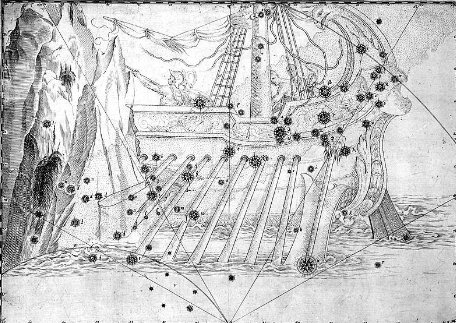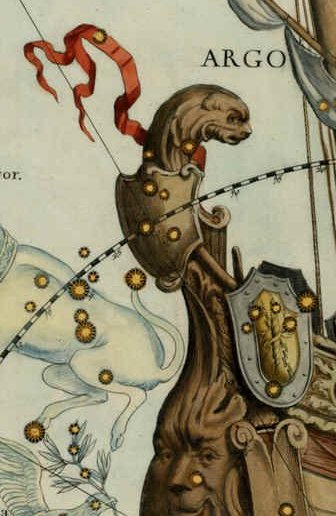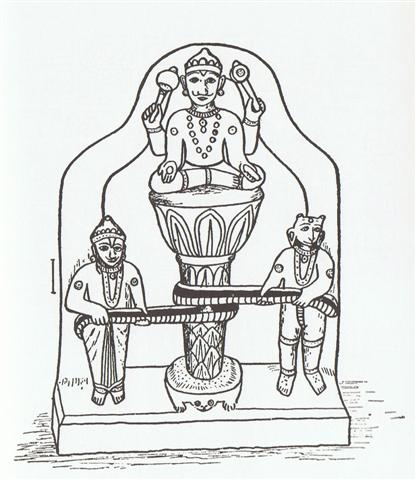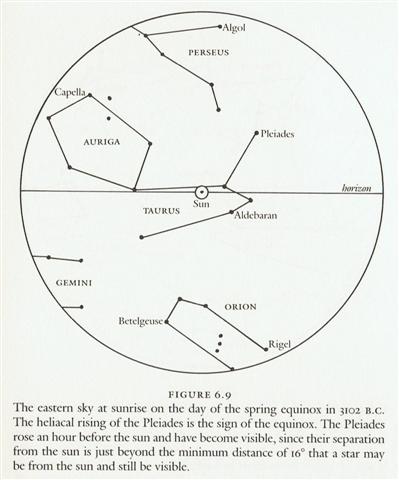I have no glyph type for the combination of henua + 'fist held high', but according to Metoro it stood for te henua ma te hua (cfr Cb12-4): Hua. 1. Testicle. 2. Figuratively: son, hua tahi, only son; fruits of the earth; to grow well (of fruits). 3. To cause a fight, a quarrel. Hua-ai, generation, as lineage of direct descendents; contemporaries. Huahua, coccyx of bird, 'parson's nose': huahua moa, huahua uha. Huataru, a creeper (Chenopodium ambiguum). Vanaga. 1. The same; ki hua, again, to continue, to strain, to struggle, to move, to repeat, over and above. Mq.: hua, the same, to return, to recommence. 2. To bloom, to sprout; flower, fruit (huaa); huaa tae oko, huaa vahio, young fruit; hua atahi, only son; huahaga, fruit; mei te huahaga o tokoe kopu, the fruit of thy body; tikea huahaga, deceptive appearance. P Pau.: ua, to be born; huahaga, lineage. Mgv.: hua, to produce (said of trees, grain, etc.), blooming time of flowers, abundance of fruit. Mq.: hua, to produce, to bear fruit. Ta.: ua, to sprout. Huahua. 1. Tailless fowl. 2. Vein, tendon, line. 3. Mgv.: huahua, pimples covering the face. Ta.: huahua, id. Mq.: hua, tubercules. Sa.: fuafua, abscess on hand or feet. Ma.: huahua, small pimples. Pau.: Hua-gakau, rupture. Ta.: áau, entrails. Sa.: ga'au, id. Ma.: ngakau, id. Churchill. 1. Fruit. 2. Egg. 3. Tā hua = 'genealogical writing' or 'same writing'. Fischer.
Although we have no direct words from Metoro to rely upon when investigating the G text we can guess the meaning at heliacal Dramasa was the same in Gb2-1 as in Cb12-7, viz. that the close embrace caused by rain would induce the earth to generate fruits (ua → hua). ... Sky (rangi) and Earth (papa) lay in primal embrace, and in the cramped, dark space between them procreated and gave birth to the gods such as Tane, Rongo and Tu. Just as children fought sleep in the stifling darkness of a hare paenga, the gods grew restless between their parents and longed for light and air. The herculean achievement of forcing Sky to separate from Earth was variously performed by Tane in New Zealand and the Society Islands, by Tonofiti in the Marquesas and by Ru (Tu) in Cook Islands. After the sky was raised high above the earth, props or poles were erected between them and light entered, dispelling the darkness and bringing renewed life. One detail which is iconographically of interest is whether the god responsible for separating Earth and Sky did so by raising the Sky with his upraised arms and hands, as in Tahiti and elsewhere, or with his feet as in New Zealand ... ... Now the deluge was caused by the male waters from the sky meeting the female waters which issued forth from the ground. The holes in the sky by which the upper waters escaped were made by God when he removed stars out of the constellation of the Pleiades; and in order to stop this torrent of rain, God had afterwards to bung up the two holes with a couple of stars borrowed from the constellation of the Bear. That is why the Bear runs after the Pleiades to this day; she wants her children back, but she will never get them till after the Last Day ... ... What happens after (or happened, or will happen sometime, for this myth is written in the future tense), is told in the Völuspa, but it is also amplified in Snorri's Gylfaginning (53), a tale of a strange encounter of King Gylfi with the Aesir themselves, disguised as men, who do not reveal their identity but are willing to answer questions: 'What happens when the whole world has burned up, the gods are dead, and all of mankind is gone? You have said earlier, that each human being would go on living in this or that world.' So it is, goes the answer, there are several worlds for the good and the bad. Then Gylfi asks: 'Shall any gods be alive, and shall there be something of earth and heaven?' And the answer is: 'The earth rises up from the sea again, and is green and beautiful and things grow without sowing. Vidar and Vali are alive, for neither the sea nor the flames of Surt have hurt them and they dwell on the Eddyfield, where once stood Asgard. There come also the sons of Thor, Modi and Magni, and bring along his hammer. There come also Balder and Hoder from the other world. All sit down and converse together. They rehearse their runes and talk of events of old days. Then they find in the grass the golden tablets that the Aesir once played with. Two children of men will also be found safe from the great flames of Surt. Their names, Lif and Lifthrasir, and they feed on the morning dew and from this human pair will come a great population which will fill the earth. And strange to say, the sun, before being devoured by Fenrir, will have borne a daughter, no less beautiful and going the same ways as her mother.' Then, all at once, concludes Snorri's tale wryly, a thunderous cracking was heard from all sides, and when the King looked again, he found himself on the open plain and the great hall had vanished ... 16 days after Naos was the right ascension line for 9h, and when the Full Moon was here it indicated the Sun had reached day 400 (February 4).
The star Naos (ζ Puppis) - in the top corner of the shield which possibly depicts the trunk of a twisted tree;
would in day 400 once again return to visibility late at night after its close encounter with the Sun, viz. 400 - 384 = 16 days after its true heliacal position: ... In ancient times the priest-astronomers (Brahmans) determined the recurrence of the solstices and equinoxes by the use of the gnomon. Later they developed the Nakshatra system of star reference to determine the recurrence of the seasons, much as the Greeks used the heliacal rising of some star for the same purpose. An example of the operation of the Nakshatra system in antiquity can be seen in figure 6.9.
Here we see that the spring equinox occurred when the sun was at its closest approach to the star Aldebaran (called Rohini by the Hindus) in our constellation Taurus. But, of course, the phenomenon would not have been visible because the star is too close to the sun for observation. The astronomers would have known, however, that the equinoctial point was at Aldebaran by observing the full moon falling near the expected date or near a point in the sky exactly opposite Aldebaran (since the full moon is 180º from the sun), that is, near the star Antares ... 13 * 29½ = 383½. The head came off, which was necessary in order to generate a new one, just as when a branch or the top of a tree is cut off in order to induce new growth.
... And then the bone spit out its saliva, which landed squarely in the hand of the maiden. And then she looked in her hand, she inspected it right away, but the bone's saliva wasn't in her hand. It is just a sign I have given you, my saliva, my spittle. This, my head, has nothing on it - just bone, nothing of meat. It's just the same with the head of a great lord: it's just the flesh that makes his face look good. And when he dies, people get frightened by his bones. After that, his son is like his saliva, his spittle, in his being, whether it be the son of a lord or the son of a craftsman, an orator. The father does not disappear, but goes on being fulfilled. Neither dimmed nor destroyed is the face of a lord, a warrior, craftsman, an orator. Rather, he will leave his daughters and sons. So it is that I have done likewise through you. Now go up there on the face of the earth; you will not die. Keep the word. So be it, said the head of One and Seven Hunaphu - they were of one mind when they did it ... Notably MAY 15 was the day when the Sun in ancient times would have reached Drus:
|
|||||||||||||||||||||||||||||||||||||||||||||||||||||||||||||||||||||||||||||||||||||||||||||||||||||||||||||||||||||||||||||||||||||||||||||||||||||||||||||||||||||||||||||||||||||||||







 .
.




